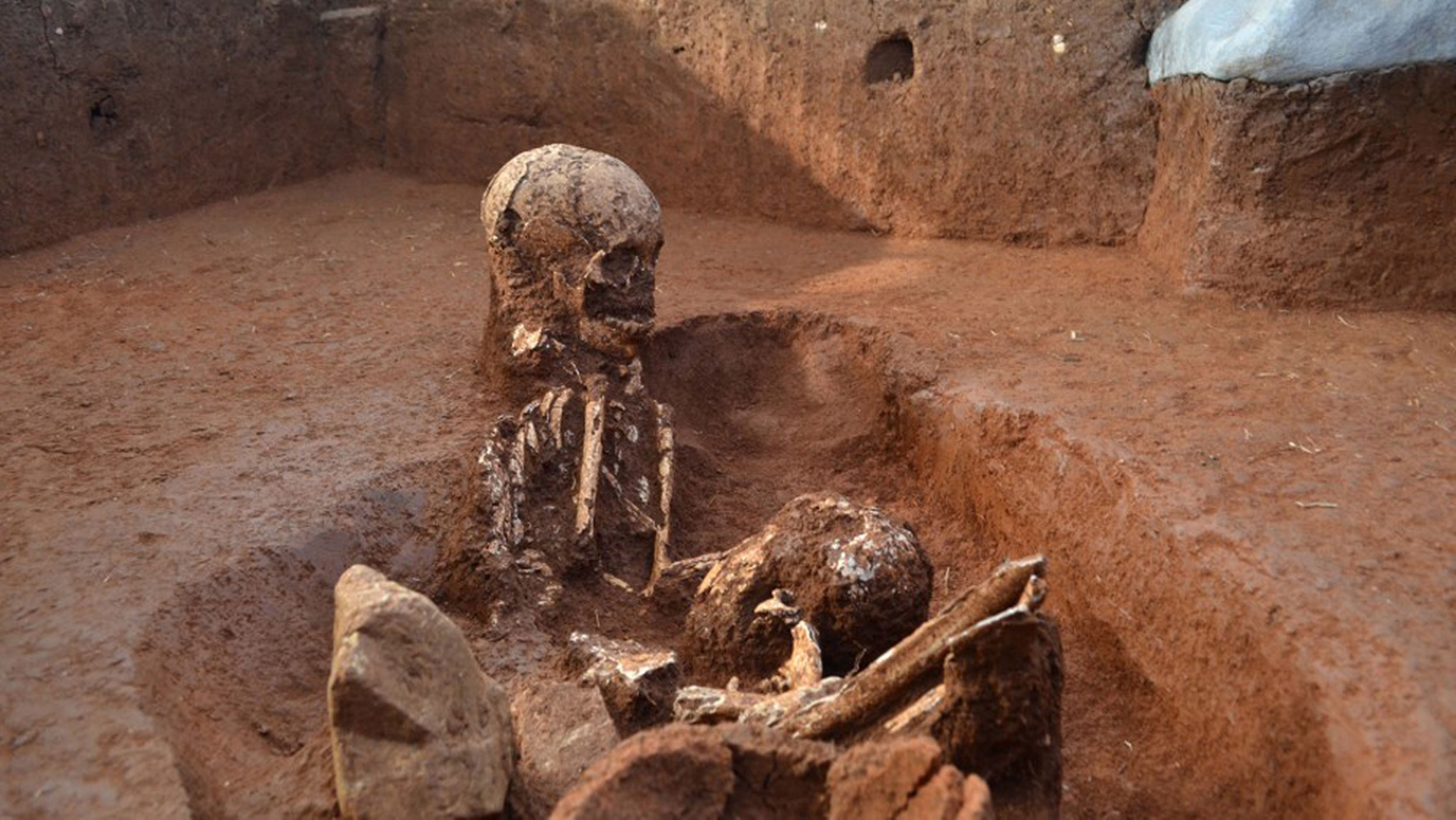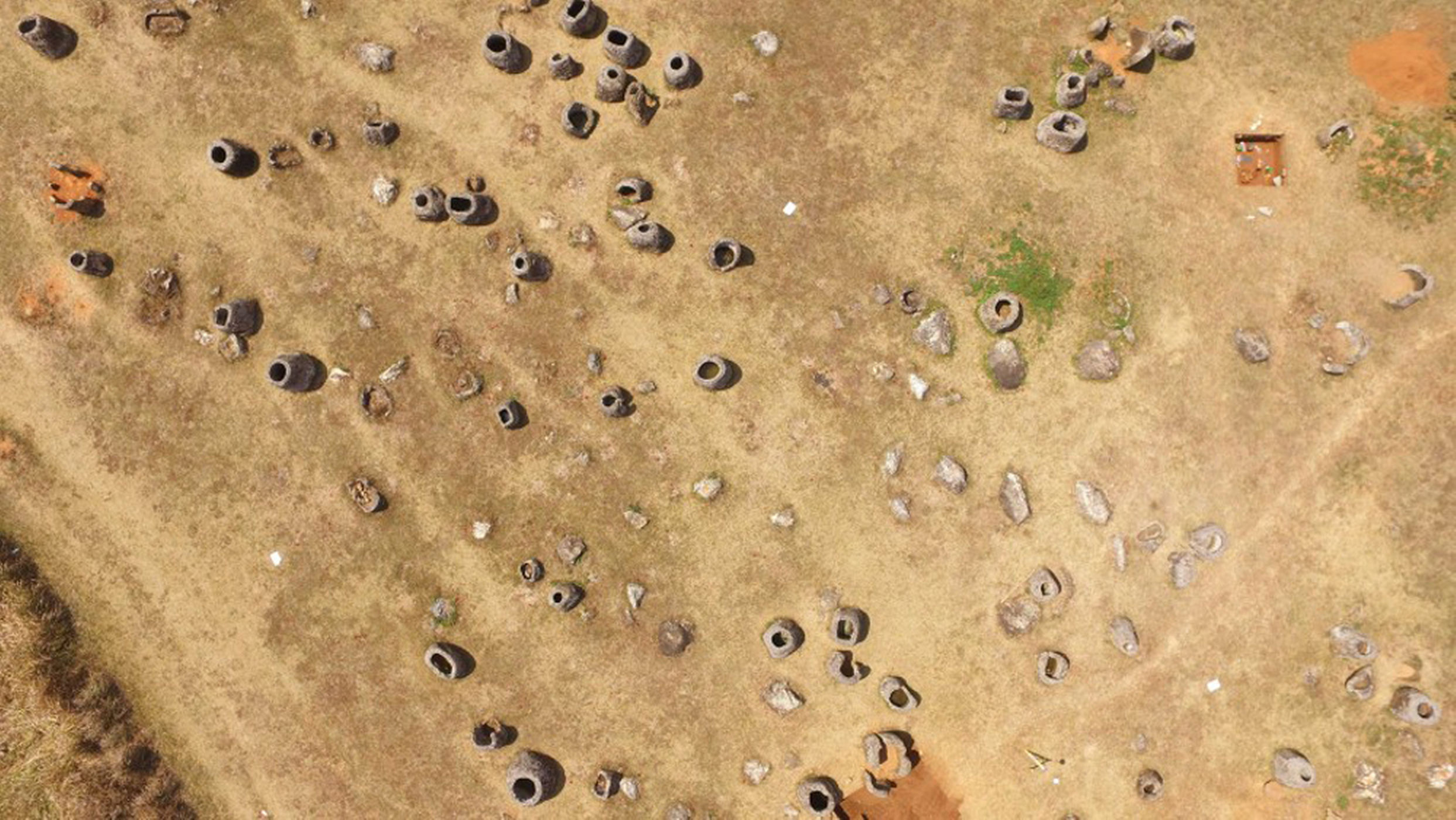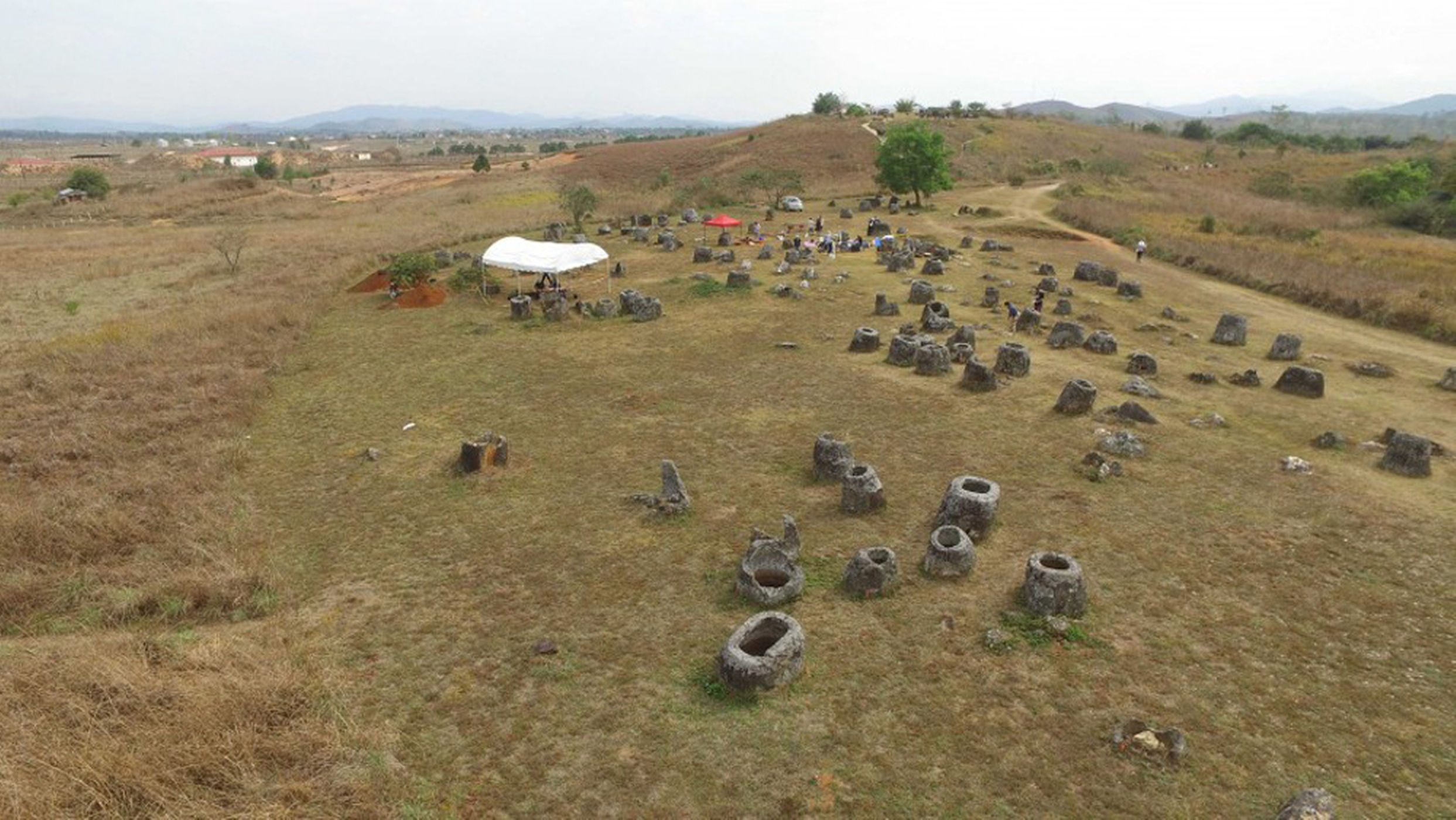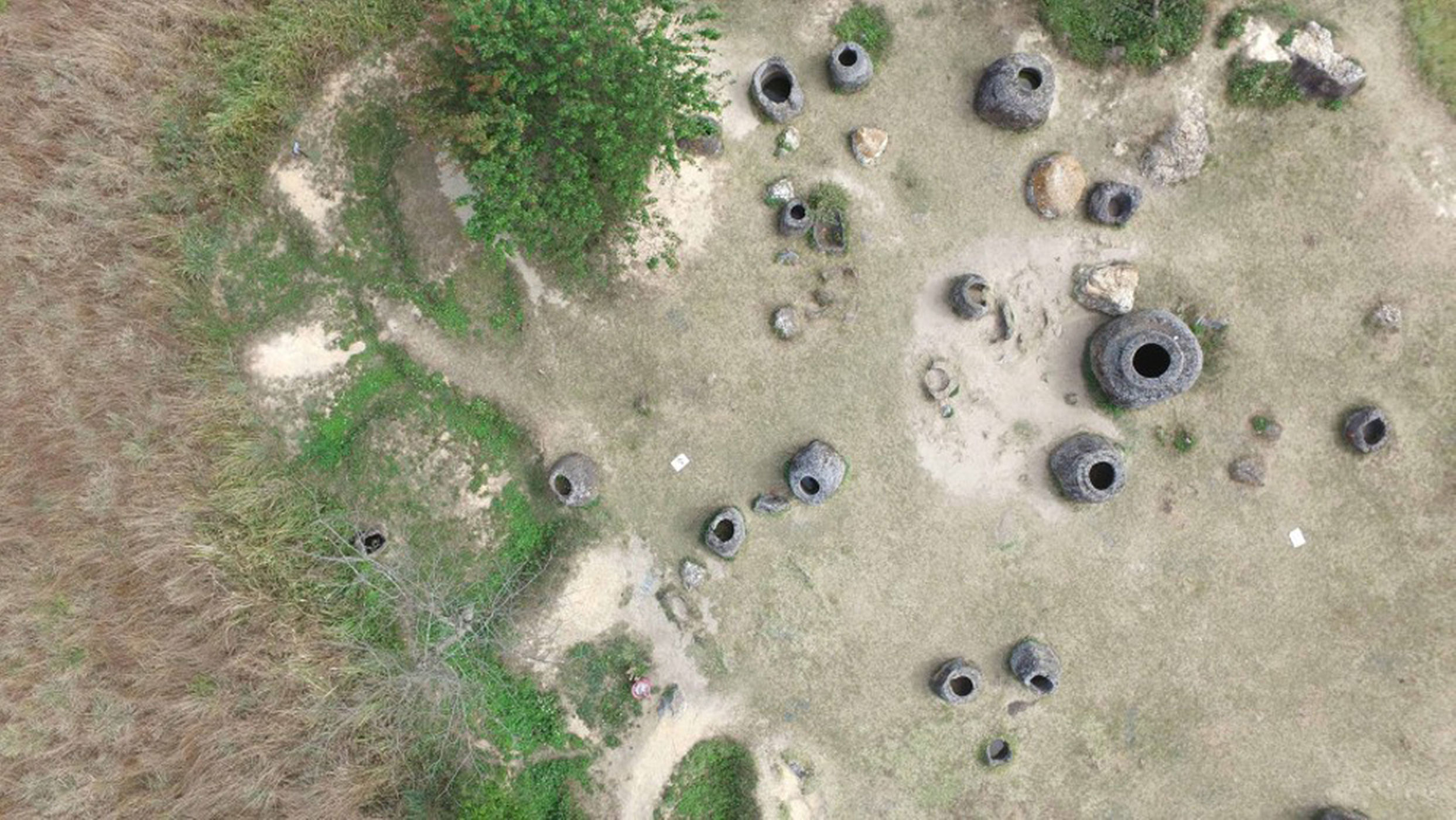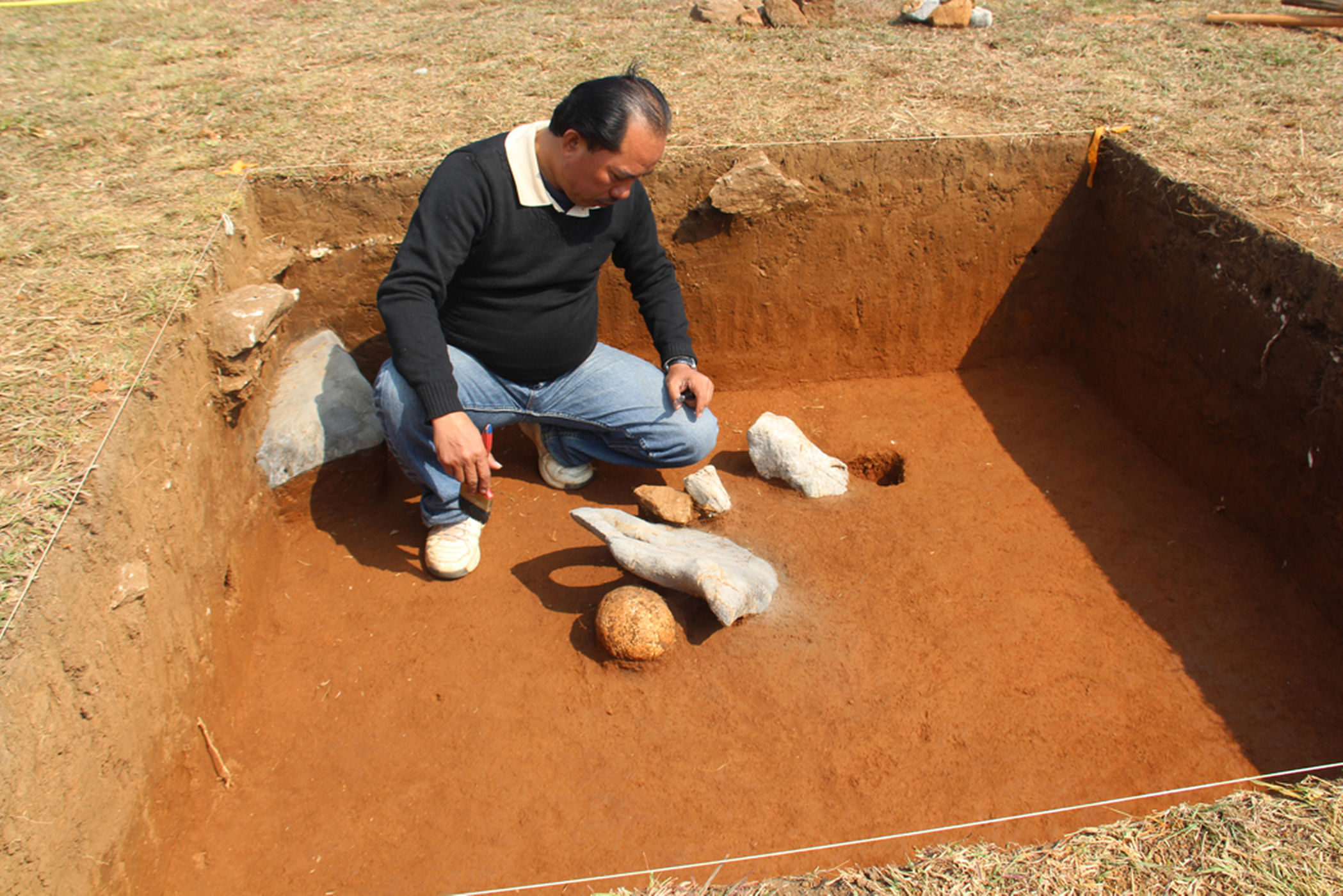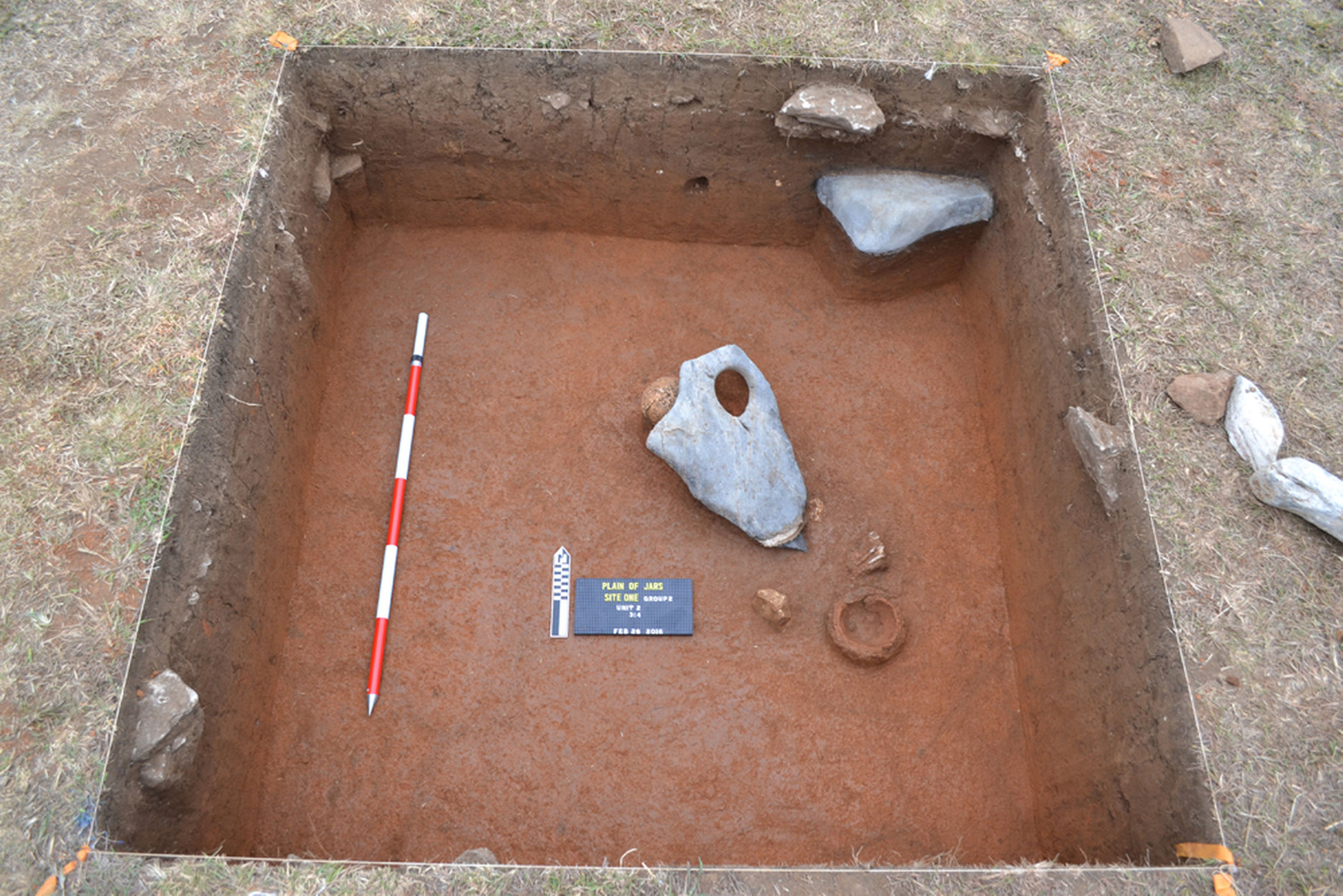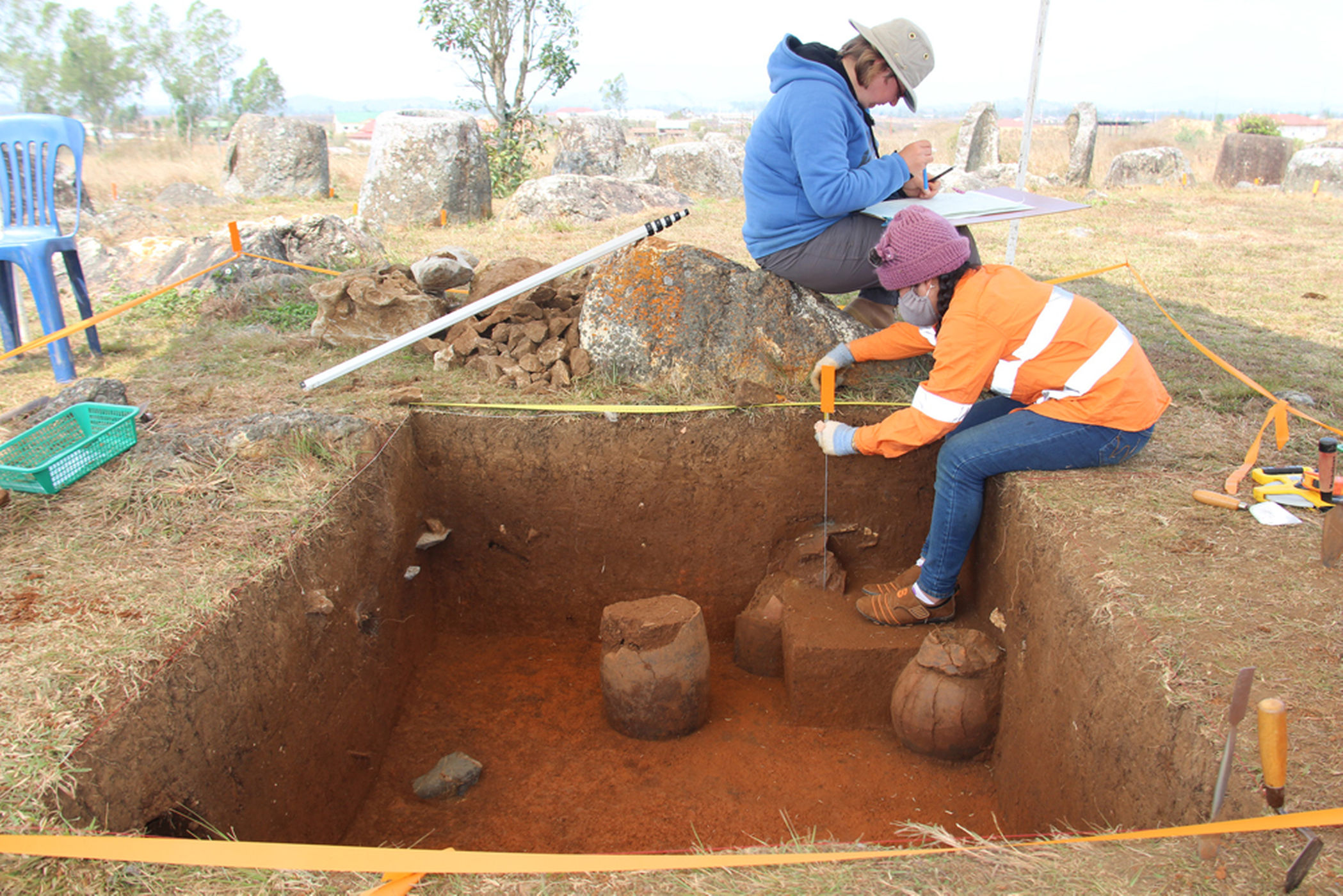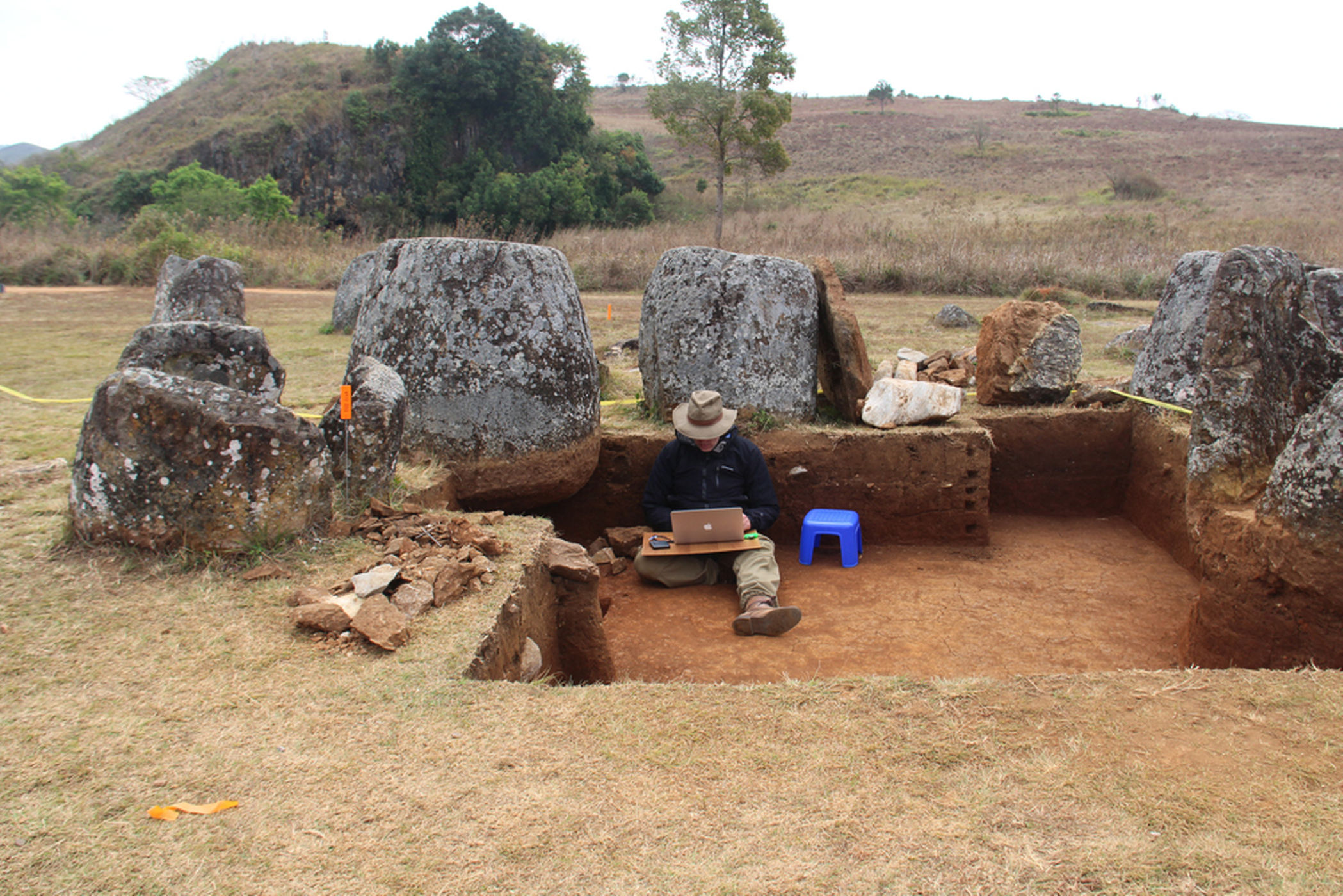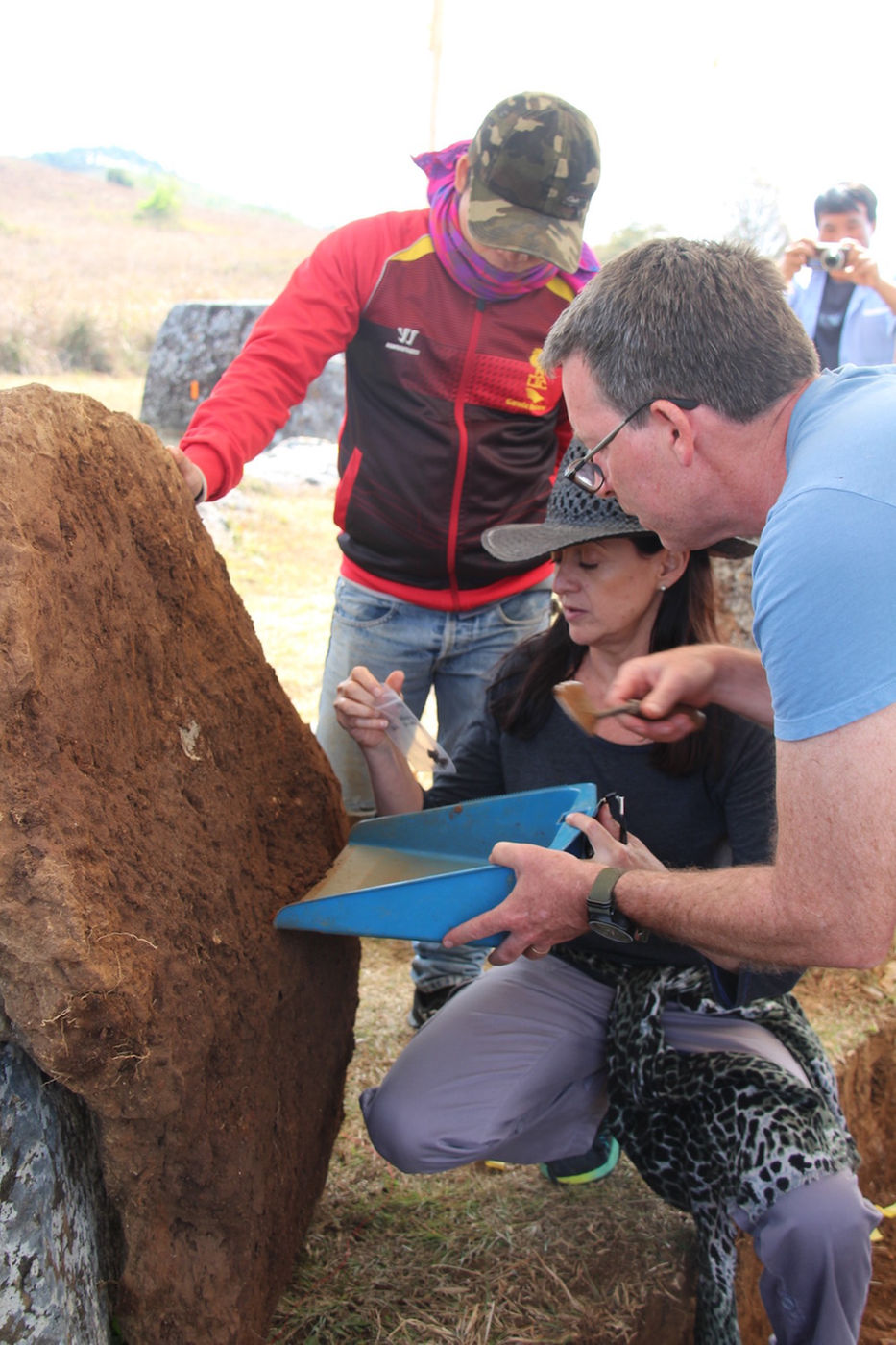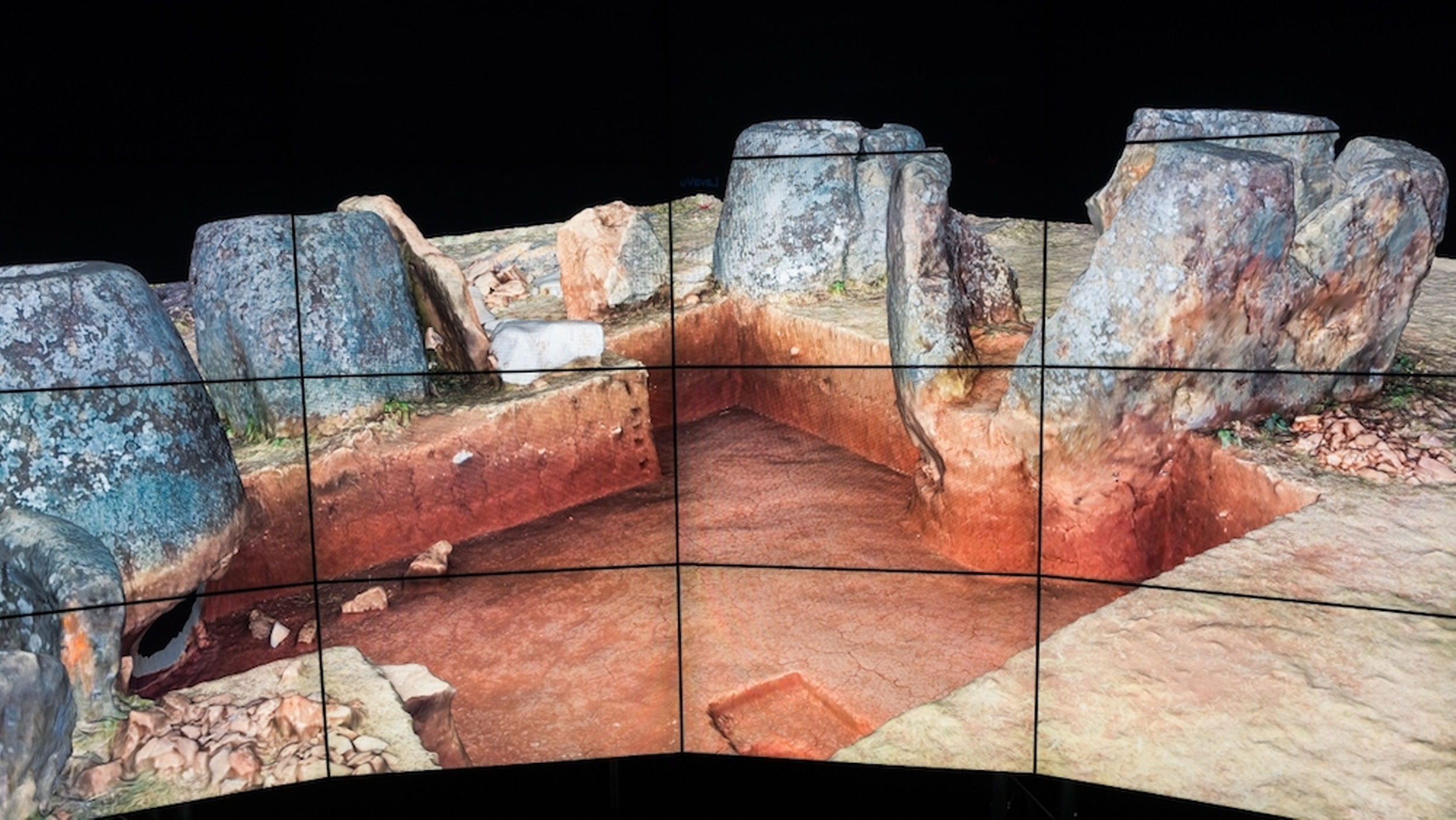Information
In Photos: Exploring the Mysterious Plain of Jars Site
The mysterious Plain of Jars is an archaeological site in central Laos that has thousands of stone vessels scattered across the ground. Researchers have long tried to figure out why the stone jars were littered across this remote part of Laos.
Archaeologists recently unearthed anancient burial site and human remains at the Plain of Jars. The burial site is estimated to be 2,500 years old, and could help researchers glean new information about the mysterious site.
The researchers are also using data from the excavations and video from aerial drones to recreate the archaeological site in virtual reality. This means scientists can revisit and review their field work in Laos from more than 4,000 miles away, in Australia.
An aerial drone photograph of "Jar Site 1" in the Plain of Jars, located near Phonsavan in central Laos.
The archaeologists from Laos and Australia spent four weeks in February 2016 mapping and excavating the ground around a group of the massive carved stone jars that dot the landscape at Jar Site 1
Jar Site 1 is the best known of more than 85 ancient jar sites in the remote hills and valleys of the Xieng Khouang plateau in Laos.
The area was heavily bombed by American warplanes during the Vietnam War and only seven jar sites, including Site 1, have been cleared of undetonated bombs.
An aerial drone photograph of stone jars and marker stones at Jar Site 1
Thonglith Luangkhoth, an archaeologist in Laos, inspects the primary burial site discovered at Jar Site 1
This is a view of the primary burial site discovered at Jar Site 1. The quartz-rich stone is aligned so the skull appears to look out through the hole.
The Jar Site 1 site, photographed from one of the excavation trenches.
Thonglith Luangkhoth (left) and Dougald O’Reilly (far right) excavating a secondary burial site. O'Reilly led a team of scientists on the joint Laos-Australian expedition to the Plain of Jars.
The researchers also uncovered 11 ceramic jars, which are expected to contain "secondary" burials of human bones from which the flesh was removed. Here, archaeologists at Jar Site 1 record details of the ceramic secondary burial jars.
The contents of the ceramic jars excavated from the site will also be carefully examined to confirm if, as the researchers suspect, they hold human remains.
Archaeologists Louise Shewan, of Monash University in Melbourne, Australia (center), and Dougald O’Reilly, from Australian National University in Canberra (right), are directing a major five-year investigation of the Plain of Jars site. This photograph shows the researchers removing human teeth from the underside of one of the sandstone disks used to mark some of the ancient graves at Jar Site 1.
Genetic material from the ancient teeth with be used for DNA analysis, while traces of radioactive strontium will be used to identify the geological signature of the area where the people buried here gathered their food.
The aerial landscape images and other data from research at the Plain of Jars have been integrated into an advanced 3D simulation at the Cave2 virtual reality facility at Monash University. The simulation lets researchers in Australia view and explore the images and other data from the different research efforts within the Plain of Jars Archeological Project.
The Cave2 simulation also records a timeline that can be stepped forward or back to show the state of the excavations at any time, and which will be updated as the digs and discoveries at the Plain of Jars continue at Site 1 and other jar sites in the years to come.
Category: English
News
Information
Key words:

